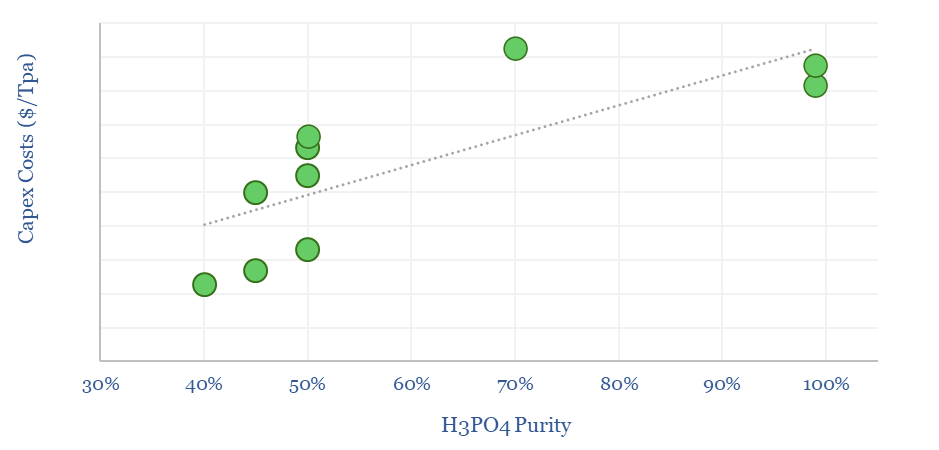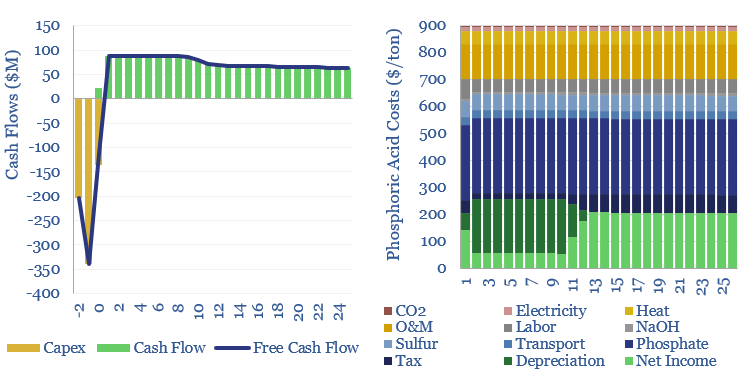Phosphoric acid production costs are $500-900/ton, for a 10% IRR on a new facility, with $1,000-2,000/Tpa of capex. This is using the ‘wet process’, where phosphate ores are reacted with sulfuric acid. CO2 intensity is 0.6 tons/ton. However, the numbers depend on product purity. There is also a 10x higher-carbon, yet potentially lower-cost process, using coke in China. These variations are captured in our model.
Global production of phosphoric acid is around 80-90MTpa on a diluted basis, and 40-50MTpa on a pure H3PO4 basis. 80-90% is used in the fertilizer industry, often in the form of ammonium phosphate, for which 40-50% concentrations are sufficient. High-grade phosphoric acid is also used in the food and electronics industry, as a milder acid than sulfuric or hydrochloric acids. While a new use is in synthesizing the cathodes for LFP batteries. c90% of global phosphoric acid is made via the wet process.
In the wet process of phosphoric acid production, phosphate-containing rocks are crushed and reacted with sulfuric acid, then extensively filtered in hydrocyclones, and further treated to purify H3PO4. Most plants generate sulfuric acid on-site from elemental sulfur, as this allows the heat of H2SO4 formation to be used within the process, lowering energy costs. This is modeled in the Model_S tab, although there is also a variant where sulfuric acid is imported, on the Model_H2SO4 tab.
At the trailing 10-year average price of $900/ton, we can derive a 10% IRR on a facility producing high-grade H3PO4, using the wet process for phosphoric acid production, with a total CO2 intensity of 0.6 kg/kg. The largest opex lines are phosphate ores (c30%), O&M (15%), elemental sulfur (7%), labor (6%), heat (5%) et al.
The costs of phosphoric acid production depend largely on the product concentration. Greater purification requires higher capex costs (chart below).

The key limitation of the wet process for phosphoric acid production is the need for high-grade ores, often found in Morocco, Jordan and Russia, which should contain high quantities of phosphates, with limited carbonates, MgO, Fe2O3, Al2O3.
There is also a dry process, which can run lower-grade ores, by effectively smelting them in an electric arc furnace with metallurgical coal or coke. This process is said to take place in Kazakhstan and China. Together with lower ore costs and cheap coal, the pyrogenic process for phosphoric acid production can have 25-50% lower costs than the wet process, but almost 10x higher CO2 intensity at 5 tons/ton of H3PO4. This is modeled in the ‘Dry_Process’ tab.
Further notes on the supply chain are contained in the final tab of the model, including conversions from P2O5 to H3PO4 and more details on the energy usage. Please download the model to stress-test the costs.
